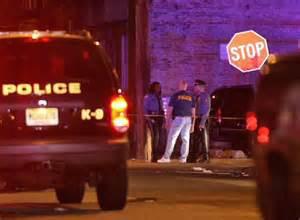Hot Spot Policing
Through the use of police data, we are able to identify specific problem areas (Hot Spots) that allow us to address crime and disorder based on geographic locations, days and times. Once these locations are identified the appropriate strategies can be developed to address the crime and disorder. In New York City, NYPD Commissioner Bill Bratton used Hot Spot policing and crime trends data to address the crime, minor offenses and quality of life issues to successfully drive New York City crime rate down.
In New York City, NYPD Commissioner Bill Bratton used Hot Spot policing and crime trends data to address the crime, minor offenses and quality of life issues to successfully drive New York City crime rate down.The NYPD, through Comp Stat, has identified the specific problem areas associated with crime and disorder (Hot Spots) making it possible to direct their resources to the specific areas, days and time, where their resources are mostly needed. In tracking their progress the NYPD has been able to show that as a result of Hot Spot Policing crime continues to decline with no indication of crime displacement to other police precincts or the suburbs.
The Paterson Police Department adopted the use the Comp Stat, described by Dr. Jon Shane of John Jay College of Criminal Justice as “a strategic crime control technique centered around, (1) accurate and timely intelligence, (2) effective tactics, (3) rapid deployment of personnel and resources and (4) relentless follow-up and assessment.”
Shootings in business curfew areas drop by 71-percent.
Paterson Times, July 21, 2015
Through the use of Comp Stat with Hot Spot Policing codified in a business curfew, the City of Paterson has created a model strategy that focuses on problem areas and has empowered residents to take back their neighborhoods by organizing and addressing the importance of their Quality of Life.

4th Ward residents successfully block liquor
store from locating in the neighborhood.
Paterson Times, April 14, 2016
